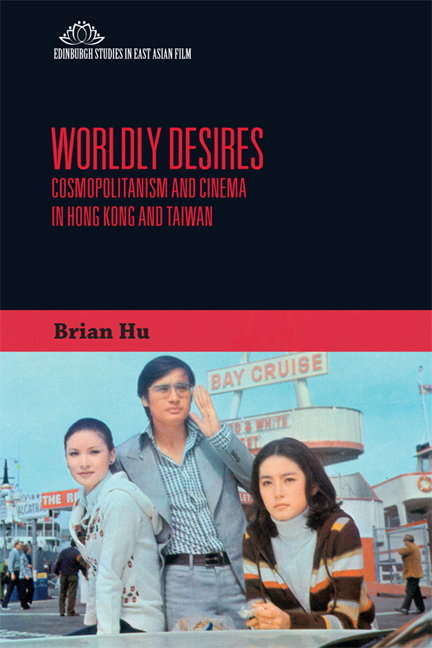Book contents
- Frontmatter
- Contents
- List of Figures and Tables
- Acknowledgments
- Notes on Romanization
- Introduction
- 1 Melodramas of Arrival and Departure: Jet-set Students in 1970s Taiwanese Romance
- 2 ABCs, Mixed-race Stars, and Other Monsters of Globalization
- 3 Setting the Stage: Hong Kong Musical Stars Take on the World
- 4 All the Right Moves: Mobile Heroes and the Shaolin Temple Film
- 5 The Cosmopolitan Brand: Film Policy as Cultural Work in the International Film Market
- Conclusion
- Works Cited
- Index
5 - The Cosmopolitan Brand: Film Policy as Cultural Work in the International Film Market
Published online by Cambridge University Press: 04 May 2021
- Frontmatter
- Contents
- List of Figures and Tables
- Acknowledgments
- Notes on Romanization
- Introduction
- 1 Melodramas of Arrival and Departure: Jet-set Students in 1970s Taiwanese Romance
- 2 ABCs, Mixed-race Stars, and Other Monsters of Globalization
- 3 Setting the Stage: Hong Kong Musical Stars Take on the World
- 4 All the Right Moves: Mobile Heroes and the Shaolin Temple Film
- 5 The Cosmopolitan Brand: Film Policy as Cultural Work in the International Film Market
- Conclusion
- Works Cited
- Index
Summary
The preceding chapters benefited from an abundance of evidence. In examining discourses of cosmopolitanism and proposing cultural, political, industrial, and demographic explanations, I could rely on dozens, and in some cases well over 100, filmic examples from which to trace patterns and identify aesthetic and narrative trends. Stars from Linda Lin Dai in the late 1950s to Daniel Wu in the early 2000s made numerous films per year. The Shaolin and Chiung Yao cycles reflected the brazen overproduction of the Hong Kong and Taiwan film industries in the 1970s. The staggering volume of film production emerging from these relatively small locales has accounted for the convincingness and detail of some of the most important book-length studies of Hong Kong and Taiwanese cinemas. For instance, it is largely due to the sheer number and diversity of films from the 1980s and 1990s that Ackbar Abbas cites in his influential essays on the “déjà disparu” that his argument seems generalizable to the industry as a whole and to Hong Kong culture more broadly during the countdown years. Studies of the New Wave in Hong Kong and the New Cinema in Taiwan had a large corpus of films and filmmakers to choose from and required the cinemas’ prolificness to first convince readers that these are in fact film movements, and then to argue that the films in such movements have shared aesthetic, narrative, and industrial attributes.
But how does a scholar study the films of an industry that no longer exists, that barely exists, or that is still in the process of becoming? Much has been made of the dwindling annual output of films produced in Hong Kong and especially Taiwan. Once dubbed the “Hollywood of the East” and considered the third biggest film industry in the world, Hong Kong's feature-film output sharply declined in the first decade of the twenty-first century. In 2007, Hong Kong produced only fifty films, barely a fifth of the industry's output in 1993.
- Type
- Chapter
- Information
- Worldly DesiresCosmopolitanism and Cinema in Hong Kong and Taiwan, pp. 179 - 208Publisher: Edinburgh University PressPrint publication year: 2018



